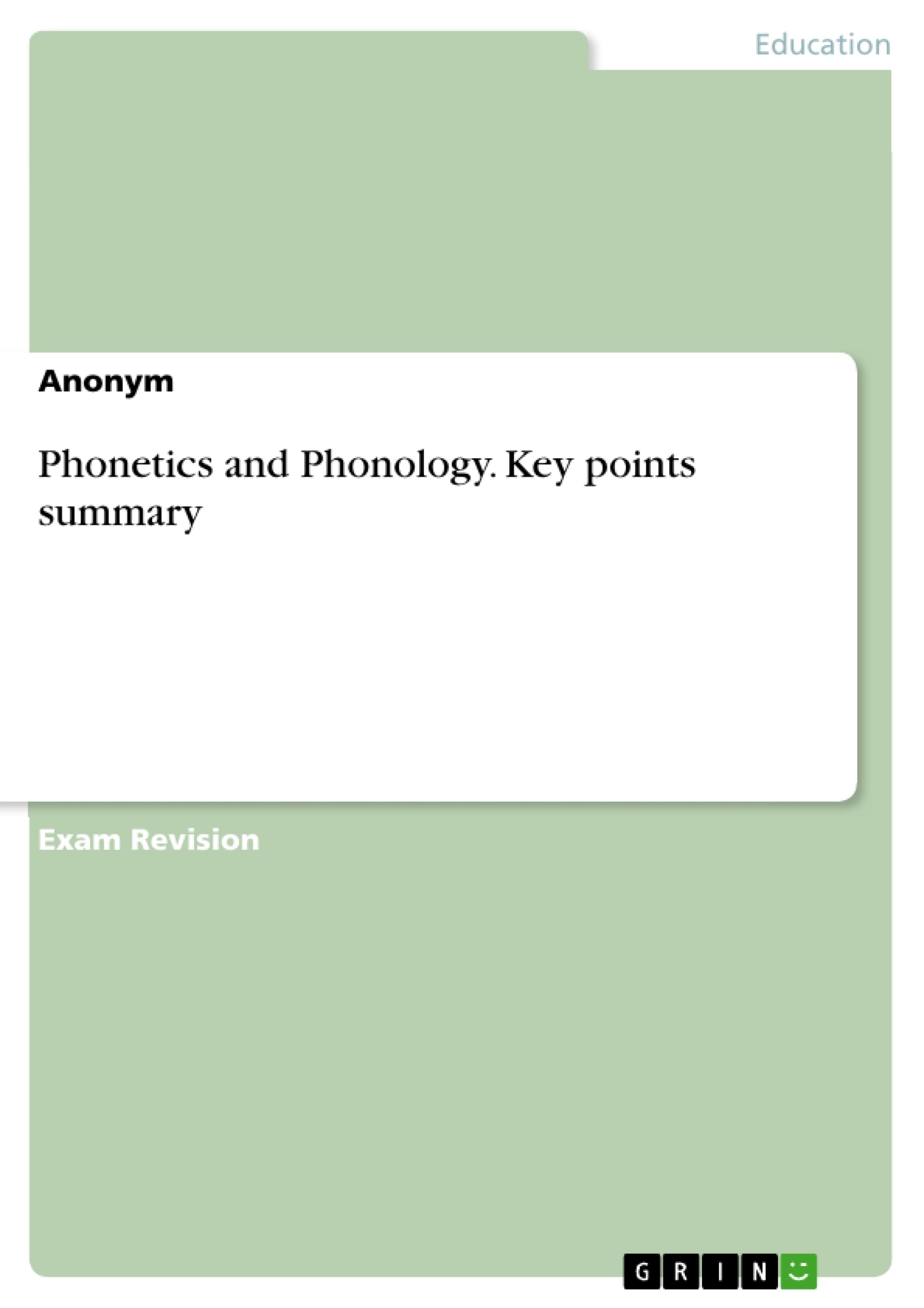This learning summary covers the topic of "Phonetics and Phonology" in key points.
From the contents:
- Introduction and basic terminology;
- The production of speech sounds;
- The articulation of English consonants and vowels;
- Phonemic transcription guidelines;
- Variation and interference: British vs. American English; English vs. German;
- Allophonic variation;
- Syllable structure and stress;
- Phonotactic constraints;
- Features of connected speech
Inhaltsverzeichnis (Table of Contents)
- 1. Introduction and basic terminology
- Field of Phonetics
- Field of Phonology
- Phoneme
- Phone (Laut)
- Allophone
- Aspiration
- Spelling pronunciation (Aussprache der Rechtschreibung)
- Lexical set
- Phonetic alphabet
- Dialects
- Accent
- 2. The production of speech sounds
Zielsetzung und Themenschwerpunkte (Objectives and Key Themes)
This text aims to provide an introduction to phonetics and phonology, exploring the physical characteristics of speech sounds, their production, and their use in different languages. It also delves into the theoretical concepts of phonemes, allophones, and accents, as well as their practical application in understanding and analyzing pronunciation.
- The fundamental principles of phonetics and phonology
- The distinction between phonemes and phones
- The role of allophones in language variation
- The production of speech sounds and the organs involved
- The impact of dialects and accents on pronunciation
Zusammenfassung der Kapitel (Chapter Summaries)
- Chapter 1: This chapter introduces the core concepts of phonetics and phonology, defining terms like phonemes, phones, and allophones. It discusses the role of aspiration in English and the relationship between spelling and pronunciation. The chapter also covers the importance of lexical sets and phonetic alphabets in representing speech sounds and understanding dialectal and accentual variations.
- Chapter 2: Focusing on the production of speech sounds, this chapter explores the branches of phonetics (acoustic, auditory, and articulatory). It details the organs of speech involved in articulation and provides a visual representation of the vocal tract, highlighting key anatomical components like the tongue, lips, and palate.
Schlüsselwörter (Keywords)
Key terms and focus topics in this text include phonetics, phonology, phonemes, phones, allophones, aspiration, spelling pronunciation, lexical set, phonetic alphabet, dialects, accents, articulatory phonetics, organs of speech, vocal tract, and the International Phonetic Alphabet (IPA). These concepts provide a framework for understanding the science of speech production and its variations across languages and speech communities.
- Citation du texte
- Anonym (Auteur), 2020, Phonetics and Phonology. Key points summary, Munich, GRIN Verlag, https://www.grin.com/document/1369192



